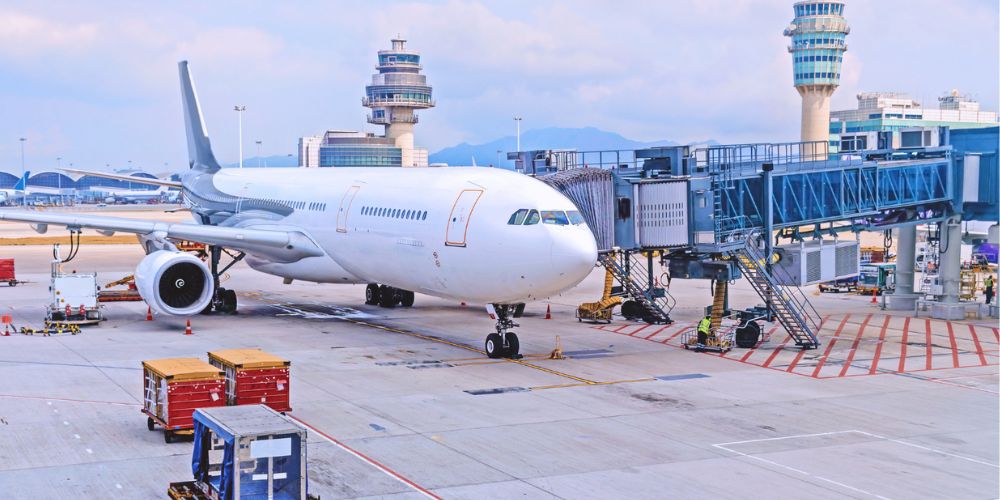Introduction
Aircraft turnaround is the procedure of preparing a plane for its next flight after landing. Now, it’s not easy or quick to get a plane ready. It takes time to monitor each activity, which includes unloading passengers and luggage, refueling, checking for maintenance issues, and boarding new passengers, all while following safety rules. In the past, this was done manually by ground crew members using strict schedules to keep things on track. Just think how much time it would take to manage passengers.
In the present time, technology is changing all these activities. AI is integrated into airlines to make this long process efficient. AI helps analyze data to find ways to improve efficiency, spot any delays, and even automate scheduling. This means that ground staff can get real-time updates on the aircraft’s status, making it easier to react to any unexpected issues.
As a result, turnaround times are shorter, flight schedules are better, and passengers experience less waiting. This not only benefits airlines by using their planes more efficiently, but it also makes travel more enjoyable for everyone. They are interested in learning more about how AI is reshaping aircraft turnaround? Be sure to read this blog.
Before we focus on how AI optimizes aircraft turnaround, let’s take a moment to understand the challenges that aircraft encounter.
Challenges of Aircraft Turnaround
Managing aircraft turnaround has always been a tough job for ground crews. They need to coordinate many tasks to make sure nothing goes wrong. From unloading passengers and their luggage to refueling and performing maintenance checks, every minute matters. Hence, if any task remains unchecked, it can lead to an emergency at the last moment. Some of the major challenges faced during aircraft turnaround include.
- Time constraints: Turnaround times are often short, especially for flights with connecting passengers. This puts pressure on ground crews to work quickly and efficiently.
- Safety concerns: With so many tasks happening at once, it’s important to ensure that all safety procedures are followed at every step.
- Coordination between different teams: Ground staff from different departments need to work together efficiently to complete all necessary tasks on time.
- Safety Regulations: Airlines must comply with strict safety regulations, which adds another layer of complexity to the turnaround process. Safety checks and procedures need to be followed diligently, adding more time to the overall process.
- Unforeseen Issues: Despite careful planning, unexpected issues can arise during aircraft turnaround, such as maintenance.
These are just a few of the challenges faced by airlines when it comes to aircraft turnaround. But how does AI help overcome these challenges? Let’s find out.
How AI Optimizes Aircraft Turnaround
The use of artificial intelligence in aircraft turnaround processes has completely changed how airlines function. What used to be a complicated and manual task is now much quicker and more efficient.
AI helps airlines use data to make smart decisions, which speeds up turnaround times and improves overall operations. With tools like predictive analytics and machine learning, airlines can foresee demand and manage tasks on the ground more efficiently. For example, AI can look at past data to predict flight delays or staffing needs, helping airlines allocate resources better and simplify processes.
This not only makes ground crews more efficient but also benefits passengers with faster flights and a smoother travel experience. In the end, using AI in airline operations leads to happier customers and cost savings. Let’s take a look at how AI is improving different parts of the aircraft turnaround process.
1. Predictive Maintenance
Maintenance is important and must be carried out with proper checks. AI systems are now integrated to help airlines analyze data from aircraft sensors and predict when maintenance is needed. These systems monitor engine performance, temperature, and vibrations without requiring a staff member. This proactive approach saves time and helps prevent delays or cancellations due to unexpected maintenance issues.
2. Resource Allocation
When managing many activities with tight deadlines, the pressure to get a lot done can really build up among the crew. However, one amazing thing about using AI in aircraft turnaround is how it optimizes resource allocation. It can analyze real-time data like flight schedules, crew availability, and equipment status to make sure the right people and tools are assigned to each task. For example, when a flight lands, AI figures out exactly how many ground crew members are needed for things like refueling, baggage handling, and security checks. This precise evaluation helps avoid underutilization and overstaffing, making sure everything runs smoothly and efficiently without wasting time or resources.
3. Better Communication
A major gap in airline services is communication. AI technology is helping to improve this by providing a centralized platform for updates and notifications during the turnaround process. It ensures that all departments—from ground handling to catering—are informed of real-time changes and requirements. This collaborative approach minimizes miscommunication and enhances coordination, leading to quicker responses to delays or operational challenges. Overall, effective communication is key to productive operations in the airline industry.
4. Passenger Experience
AI has transformed the passenger experience when it comes to aircraft turnaround. With these AI-driven systems in place, airlines give real-time updates on flight status and boarding times right through mobile apps or electronic displays. This kind of transparency helps build trust and reduces anxiety for travelers because they’re always in the loop. Plus, by speeding up turnaround times, passengers end up waiting less at the gate, which makes air travel more enjoyable and efficient.
5. Intelligent Scheduling
AI systems use historical data and real-time information to make accurate predictions about flight delays, cancellations, or baggage handling times. This helps airlines schedule their flights with more precision, improving on-time performance and reducing wait times for passengers. Moreover, AI also analyzes weather patterns and airport congestion to suggest alternative routes based on fuel efficiency and time- savings. Overall, AI-driven scheduling leads to better flight planning and operations.
Case Studies and Implementation
To see how AI affects aircraft turnaround processes, let’s look at some case studies of airlines successfully using AI. Many leading airlines have integrated AI technologies, leading to better efficiency and happier customers.
By examining these cases, we can understand how AI helps overcome turnaround challenges and sets new standards in aviation. These examples also show the smart choices made by airlines and the benefits gained, highlighting how AI is changing the future of air travel.
Case Study 1: Delta Airlines
Delta Airlines has implemented an AI-driven maintenance management system that utilizes data analytics to predict aircraft maintenance needs. These systems monitor real-time aircraft data alongside historical performance, successfully reducing unscheduled maintenance events by 30%. This improvement has led to fewer flight delays and enhanced overall operational efficiency, enabling Delta to maximize the availability of its fleet.
Case Study 2: Southwest Airlines
Southwest Airlines has adopted an intelligent scheduling tool powered by AI to enhance its flight operations. By analyzing passenger booking data and historical travel patterns, the tool optimizes flight schedules, resulting in a remarkable 15% reduction in turnaround times. This advancement has allowed Southwest to increase the number of flights on specific routes without compromising service quality, ultimately leading to improved customer satisfaction.
Case Study 3: AirAsia
AirAsia used AI to elevate its check-in process by introducing automated self-service kiosks with machine learning. This technology made check-in faster and learned from passenger behavior to offer personalized help. As a result, the airline reduced check-in times by 25%, leading to quicker aircraft turnarounds and better passenger flow.
Optimizing Aircraft Turnarounds with Folio3 AI Solutions
Folio3 AI has transformed the way airlines manage their operations by providing a comprehensive AI solution. Its advanced technologies optimize aircraft maintenance, resource allocation, and communication, ultimately leading to more efficient turnarounds. This innovative approach has helped airlines reduce operational costs, increase customer satisfaction, and maximize revenue. Some of the key features of Folio3 AI Solutions for aircraft turnaround include:
Key Features of Folio3 AI Solutions for Aircraft Turnaround
- Predictive Maintenance: Uses data to predict when maintenance is needed, reducing unexpected downtime and flight delays.
- Real-Time Resource Optimization: Looks at operational data to efficiently assign ground crew and equipment, ensuring quick task completion.
- Centralized Communication Platform: Sends instant updates across departments, improving teamwork and reducing confusion.
- Passenger Engagement Tools: Provides real-time flight updates through apps and screens, enhancing the travel experience and easing passenger worries.
- Dynamic Scheduling Algorithms: Uses past and real-time data to improve flight schedules, boosting on-time performance and efficiency.
Conclusion
There is no doubt that using AI in aircraft turnaround processes is helpful for airlines. It uses data and predictive analytics to improve schedules, manage maintenance, and upgrade the passenger experience. This means faster turnaround times, better efficiency, and happier customers. As technology gets better, AI is set to play an even bigger role in the aviation industry, changing how planes are prepared for future flights. Overall, with AI’s help, we can optimize aircraft turnaround and set new standards for the airline industry.

Dawood is a digital marketing pro and AI/ML enthusiast. His blogs on Folio3 AI are a blend of marketing and tech brilliance. Dawood’s knack for making AI engaging for users sets his content apart, offering a unique and insightful take on the dynamic intersection of marketing and cutting-edge technology.










